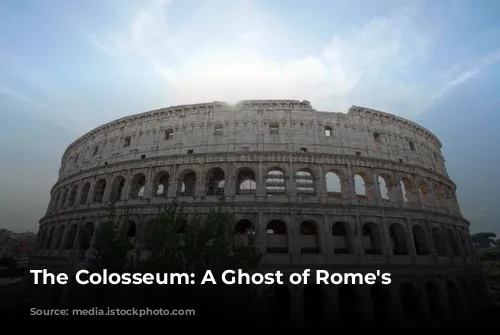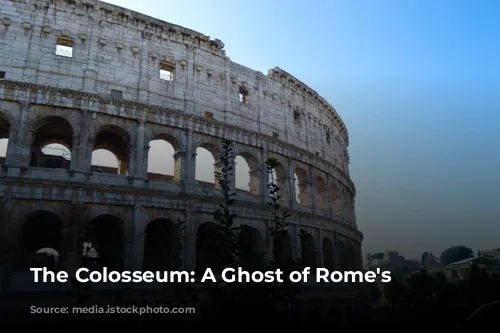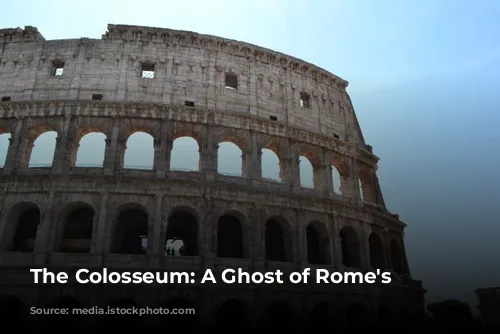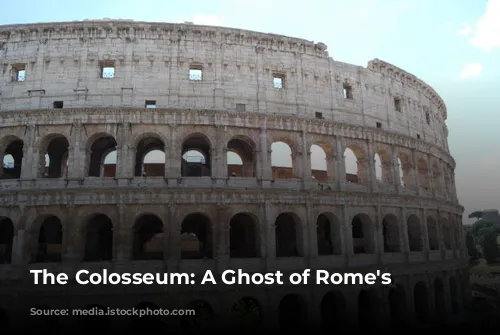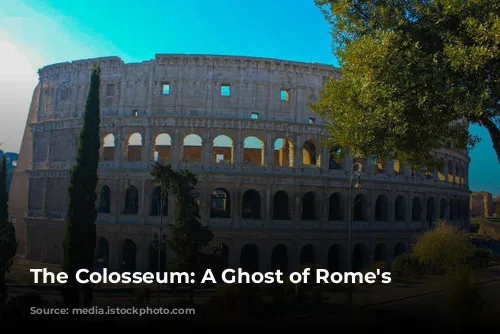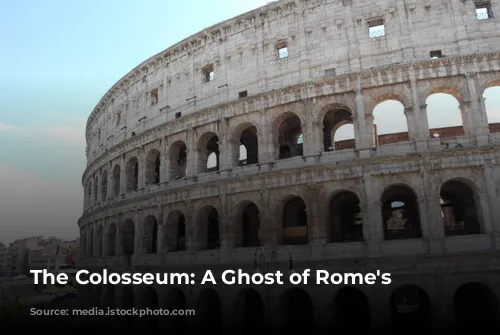The Colosseum, or Flavian Amphitheatre, stands as a testament to the grandeur of the Roman Empire. This iconic monument, the largest and most imposing amphitheatre in the Roman world, is a symbol of Rome’s power and its rich history. Imagine, if you will, a structure so vast it could hold up to 70,000 spectators!
A Grand Opening and a Prophetic Name
Emperor Vespasian, the founder of the Flavian dynasty, began construction of the Colosseum. His son, Titus, completed the colossal structure and inaugurated it in 80 A.D. with a spectacular opening ceremony that lasted for a full one hundred days. People from all walks of life flocked to witness the gladiatorial contests, animal hunts, and naumachia (naval battles) that unfolded in the arena.
The name Colosseum emerged from a prophecy by the Venerable Bede, a medieval monk, who declared, “Rome will exist as long as the Colosseum does; when the Colosseum falls so will Rome; when Rome falls so will the world.” The origin of the name may lie in the colossal statue of the Emperor Nero, which once stood nearby.
An Architectural Masterpiece
The Colosseum, built entirely from travertine stone, is an elliptical structure with four levels. The lower three levels boasted 80 arches, each adorned with magnificent statues. Its remarkable construction, completed in just under a decade, was made possible by the Romans’ mastery of the arch, a key element in their architectural prowess. The Colosseum’s design resembles a series of aqueducts stacked upon each other.
A Source of Materials and a Witness to Time
The Colosseum, now a ruin, stands as a poignant reminder of its past glory. Over time, its marble and iron were plundered, used to build other structures like the Barberini Palace and St. Peter’s Basilica. Today, the holes in its columns are testaments to this era of plunder.
A Stage for Blood and Spectacle
The Colosseum was a grand stage for a variety of spectacles that captivated the Roman public. Gladiatorial combats were the highlight of the shows, with different types of gladiators, armed with swords, nets, tridents, and shields, battling for glory and the emperor’s favor.
Venationes, or animal hunts, were another popular attraction, where wild beasts were pitted against each other or against human opponents. The spectacle of naumachia, staged by flooding the arena, offered audiences the thrill of real sea battles.
A Glimpse into Roman Life
The Colosseum’s layout reflected the social hierarchy of Roman society. The seating was organized by status, with the commoners occupying the upper tiers, while the elite sat closest to the arena. The arena itself was equipped with ingenious mechanisms to hoist animals and gladiators into the ring, creating dramatic entrances for the spectators.
From Glory to Sanctuary
After the fall of the Roman Empire, the Colosseum was abandoned, serving as a source of materials and even housing a cemetery and a hospital. In the Middle Ages, it was declared a sacred monument dedicated to the Passion of Christ, marking the beginning of its modern-day role as a symbol of Christian martyrdom.
A Legacy Enduring Through Time
Today, the Colosseum stands as a testament to the power and magnificence of the Roman Empire. Its walls bear the echoes of gladiatorial combats, the roar of the crowds, and the smell of blood and sweat. Charles Dickens aptly described it as “the ghost of old Rome floating over the places its people walk in”. The Colosseum remains a powerful symbol of the city’s history, attracting millions of visitors from around the world.
